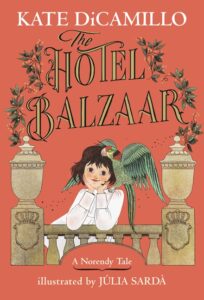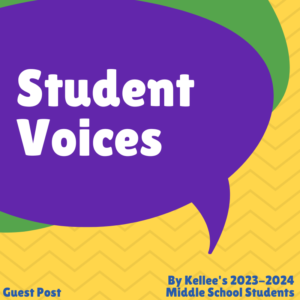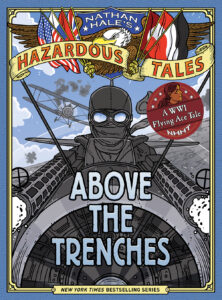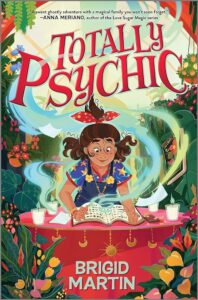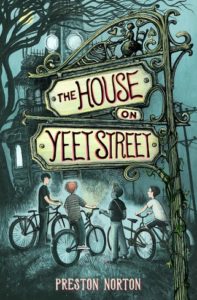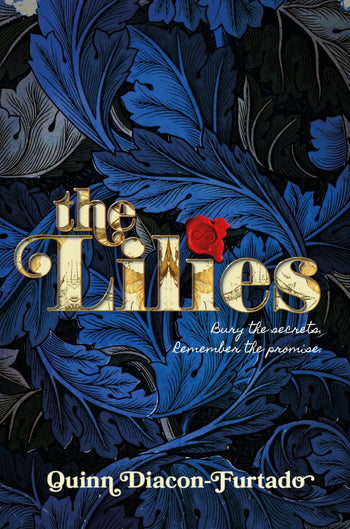“Why I Write About Messy Teens—And Why We Should Honor the Mess Inside of Us All”
One of the lies we tell each other is that the point of living is we’re supposed to get it all together. First off, I don’t know exactly what it is, and I worry it is maybe, act in a manner benefitting the patriarchy or the government, or even like what many older cis, het white people want everyone else to act like: speak English (but the right English), get a job (but the right job), work hard (but the right kind of hard), and don’t question why the work you do never results in exactly what you were told it would—in fact, stop asking questions entirely. I worry together means that an individual does this alone. I worry that all is never achievable, but it’s the thing we’re faced with, the thing we’ll fail at again and again, and worse yet, believe that we’ve failed, believe that we haven’t worked hard enough, haven’t done this simple thing everyone else seems to be doing.
And I worry that when we tell ourselves these lies as teachers, in our home life, our community life, and our school life, that we’re doing the work of socializing teens toward something we all know, in our hearts, doesn’t work well, and isn’t designed to work well for the large majority of us.
I am a teacher too.
I fight against telling my students this get it all together narrative, this hard-work-is-rewarded narrative, this we-live-in-a-meritocracy narrative every day.
After all, we know life is easier for everyone involved if young people would, for example, learn to submit their work on time.
But submitting things on time won’t save them, not really.
#
So, with this lie—get it all together—in mind, I write about messy teens. Teens who get to remain messy. Whose identities are hybrid, this-plus-this-plus-this, or whose identities are flexible the way gender identity is for many young people, or, for example, whose identities are radically changing the way a person’s perception of self needs to change after a 30-foot uncontrolled fall to the ground results in a traumatic brain injury. I write about teens who learn to love their mess. Teens who grow with their mess or into their mess, instead of getting it all together in the way that (Western ideas about) character development, as well as other power structures, might tell us we ought do see done in a novel.
My characters don’t always have the words or the skills to handle the world around them. But that is not their fault.
The world, it can be what’s wrong, what needs to change, too.
#
Let’s turn to my new book filled with messy teens, A Constellation of Minor Bears, out from HarperCollins’ Heartdrum imprint.
Meet Molly Norris-Norquay, an overachieving fat, maybe queer, Métis and white seventeen-year-old high school graduate, who is walking away from her life as fast as her feet can carry her 60-liter hiking pack and all the things she’ll need to successfully complete the Pacific Crest Trail.
At her high school graduation, the afternoon before her flight to San Diego, California, she says: “The anger inside me pulses like it has its own veins and arteries. The noise, the pressure, is overwhelming. A breeze brushes tulle against my heated skin. I want to crush something or run a 5K race or sit down in the grass and have a big cry, a full-fledged temper tantrum, and I have no idea which.”
I could tell you about Molly’s white brother Hank and his messiness, how he’s recovering from a sports-related traumatic brain injury, or about Hank and Molly’s best friend Tray and how he might look like he’s under control, behaving, following the rules, but he’s awfully messy too. And I could tell you about Brynn, another fat hiker, how she’s on the trail for the right reasons but walking away from her life at the same time.
Instead, I want to stay with Molly’s anger.
In A Constellation of Minor Bears, Molly gets to be angry, gets to be frustrated with her brother, her best friend, her parents, with other hikers, and the world at large, gets to be wrong and double-down, and she also gets to be right and wrong at the very same time. Molly is doing an incredible thing—walking 2,650 miles, from the US/Mexico border to the US/Canada border through mountain ranges in California, Oregon and Washington.
But she’s also barely managing it most days.
And if she’s learning anything, together, means relying on her community, her friends no matter the mess between them.
On the trail, all, means getting up and doing this hard thing over again. But sometimes all means taking a zero day—a day where a hiker walks exactly zero miles. Sometimes all means you leave the trail entirely, without finishing. Sometimes all means you find another trail.
#
I want to return to the idea that the characters I write about aren’t always able to handle the world around them, and the idea that supposes this is not their fault. Instead, it’s systems, power structures, the world around them that needs to change.
This is a critical perspective for activists who fight for a world where BIPOC and queer and trans people’s lives are full and rich and unencumbered by systems of power that tell us we are less, that tell us we don’t fit, that legislate against us, that encourage violence in word and action against us.
This perspective is foundational for fat and disability activism too. Bodies change throughout our lives. Bodies are messy in so many delightful ways. If living is anything, it’s the embodied experience of constant change, of becoming, of re-becoming.
I want to allow those of us who live in these messy, imperfect, most excellent bodies to not to have to tame ourselves, or shape ourselves to fit the world, but for the world to open up to all of us, to recognize living is not about containing our messiness, but existing in relationship with our mess and the world and all the other living and not-living things around us.
When messy teens grow up to be adults who get it all together we lose part of what makes us human.
Long live messy teens.
Long live the messy adults we become.
#
I’ll leave you with a short writing challenge for your students to play with in order to embrace mess.
- Create a messy character. What makes them messy? How is their messy different from everyone else’s? Spend a few minutes here. Orchestrate a mess.
- Now, get your character into trouble. What is the perfect trouble for their mess? Not to “fix” them, but to challenge your character.
- They don’t need to get rid of their mess by the end of the story. See what parts of their mess they want to keep, what parts help them against their trouble, what parts of their mess should be celebrated.
- Okay, now for the hard part: take a risk or two! Your risk should be something you consider risky. For example, if you always write in the first person (“I”) maybe you could try writing in the 2nd person (“You”). Your risk can be a content one too: what’s the story you’ve told yourself you aren’t brave enough to tell? What happens if you tell a story with a character you’re familiar with but you set it on a space station orbiting Mars or in a wheat field full of strange bugs or somewhere else that challenges your storytelling brain?
- But really, your job here, today is to have some fun! Play, embrace the mess inside us and around us.
<3 Jen

Published September 24th, 2024 by Heartdrum
About the Book: Award-winning author Jen Ferguson has written a powerful story about teens grappling with balancing resentment with enduring friendship—and how to move forward with a life that’s not what they’d imagined.
Before that awful Saturday, Molly used to be inseparable from her brother, Hank, and his best friend, Tray. The indoor climbing accident that left Hank with a traumatic brain injury filled Molly with anger.
While she knows the accident wasn’t Tray’s fault, she will never forgive him for being there and failing to stop the damage. But she can’t forgive herself for not being there either.
Determined to go on the trio’s postgraduation hike of the Pacific Crest Trail, even without Hank, Molly packs her bag. But when her parents put Tray in charge of looking out for her, she is stuck backpacking with the person who incites her easy anger.
Despite all her planning, the trail she’ll walk has a few more twists and turns ahead. . . .
Discover the evocative storytelling and emotion from the author of The Summer of Bitter and Sweet, which was the winner of the Governor General’s Award, a Stonewall Award honor book, and a Morris Award finalist, as well as Those Pink Mountain Nights, a Kirkus Best Book of the Year!

About the Author: Jen Ferguson is Michif/Métis and white, an activist, an intersectional feminist, an auntie, and an accomplice armed with a PhD in English and creative writing. Visit her online at jenfergusonwrites.com.
Thank you, Jen, for celebrating the messiness!

